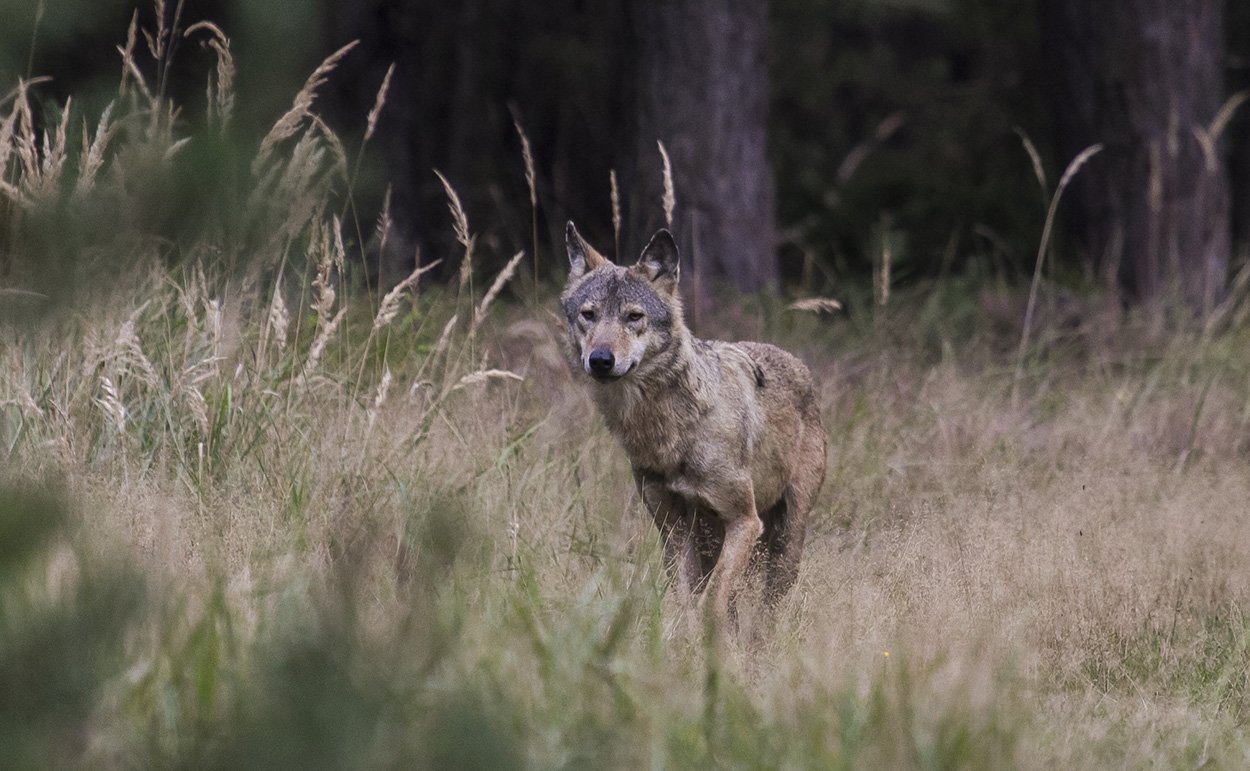As controversial as the spread of wild wolves in Germany, hybrids are less popular. Mixed breeds of domestic dogs and wild wolves are often problematic because of their behavior, and their genes falsify the genome of wild animals. A new method now makes it easier to identify such often apparently inconspicuous hybrids based on stool or hair samples. It shows that there are hardly such hybrids in Germany yet.
Twenty years ago, pups of wild wolves were born again for the first time in Germany in northeastern Saxony – the first since the domestic wolf was exterminated by humans around 1850. For a good ten years, wild wolves have been spreading rapidly in Germany. But this brings not only problems to livestock breeders and the acceptance of these predators, which were common throughout Central Europe. Return can also lead to unwanted crossbreeding of wolves with feral domestic dogs. “Especially at the beginning of this repopulation, wolves are more likely to mate with domestic dogs – simply because they don’t have a select group of sexual partners of their kind,” explains Karsten Novak of the Senckenberg Institute for Research and Natural History. Museum in Frankfurt.
Why mixed race can be a problem
However, knowing if and to what extent this crossbreeding occurs is important for wolf management. On the other hand, hybrid wolves can behave differently from wolves, and are often less shy for example. On the other hand, the canine genes introduced at crossings change the genetic makeup of the wolf, because the hybrids are still fertile and fertile. Theoretically, it is possible as a result that more and more canine genes will accumulate in the wolf gene pool over time. In addition, the social acceptance of wild wolf hybrids is low. Therefore, hybrids are usually taken from the wild,” Novak explains.
But recognizing the combination of a dog and a wolf is not easy in the wild. Outwardly, hybrids hardly differ from their wild relatives, and genetically, domesticated dogs and wolves are very similar. For identification, it is necessary to obtain a high-quality DNA sample and complete sequencing of the genetic material so that it can identify aberrations. “However, this method is very time consuming for routine monitoring of wolf populations,” Novak and his team explain. So I have developed a method that will make it easier to identify mixed breeds of dogs and wolves in the future.
New test makes identification easier
For the new test, the researchers selected 96 genetic markers in the genomes of dogs and wolves, which typically differ between the two and which can also be used to identify hybrids. On this basis, they developed a simple test array containing specific binding molecules for these blocks of 96 genes. The color change after that shows the signs present or not. In addition, the scientists have improved the process so that it also works with samples that contain little or poorly preserved DNA. “The new method has much higher accuracy than traditional methods and allows reliable detection of hybridization events even after several generations,” Nowak explains.
Thanks to this method, mixed breeds of dog and wolf can now be more easily identified using DNA from stool samples or hair or saliva residues from shredded prey. In the first tests, only 2.7 percent of all samples examined proved unsuitable. A preliminary inventory based on samples from German wolves also showed that wolves in Germany do not currently have any increased proportions of canine genes. “In our study, we did not find any increased proportions of canine genes in wolf samples from Germany,” says Nowak. “There are similar results in other areas of Europe where hybrids are constantly being removed and there are hardly any stray domestic dogs, as in Scandinavia or the Alpine region.”
The new method is routinely used in monitoring German wolves. However, researchers advocate standard use of the process across Europe. “This way we can identify areas where, for example, wild dogs need to be closely controlled in order to ensure ecological separation from wolves,” says first author Jenni Harmoinen from the University of Oulu in Finland.
Source: Senckenberg Society for Nature Research; Technical article: BMC Genomics, doi: 10.1186/s12864-021-07761-5

“Alcohol buff. Troublemaker. Introvert. Student. Social media lover. Web ninja. Bacon fan. Reader.”






More Stories
Ecologists Celebrate New Xesap National Park in Laos | Science
Is the wrong diet making you forget?
We can study it with a new telescope.